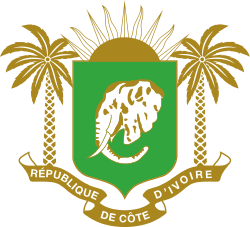Health in Ivory Coast
The public medical services of Ivory Coast are more important than the small number of private physicians and clinics. As of 2004, there were an estimated 9 physicians, 31 nurses, and 15 midwives per 100,000 people. About 77 percent of the population had access to safe water in 2000. Total health care expenditures were estimated at 3.7 percent of GDP.
Health status
Endemic diseases
Malaria, yellow fever, sleeping sickness, yaws, leprosy, trachoma, and meningitis are endemic. A broad program was set up in 1961 to control these and other diseases. Compulsory vaccination against smallpox and yellow fever was instituted, efforts by mobile health units to track down cases and provide treatment were intensified, and general health measures were tightened both within the country and at the borders. In 1999, Ivory Coast immunized children up to one year old as follows: diphtheria, pertussis, and tetanus, 62 percent, and measles, 62 percent. Malnutrition affected 24 percent of children under the age of five.
HIV/AIDS
The HIV/AIDS in Ivory Coast prevalence was 0.60 per 100 adults in 2003. As of 2004, there were approximately 570,000 people living with HIV/AIDS in the country. There were an estimated 47,000 deaths from AIDS in 2003.
According to the CIA World Factbook, in Ivory there are a total of 460,100 people who live with HIV/AIDS as of 2014.
The high incidence of HIV/AIDS is attributed to a lack of HIV education programs.
Maternal and Child Health Care
The 2010 maternal mortality rate per 100,000 births for Ivory Coast is 470. This is compared with 944.1 in 2008 and 580.3 in 1990. The under 5 mortality rate, per 1,000 births is 121 and the neonatal mortality as a percentage of under 5's mortality is 33. In Ivory Coast the number of midwives per 1,000 live births is 4 and the lifetime risk of death for pregnant women 1 in 44.[1]
About 36% of women have undergone female genital mutilation (as of 2006).[2] The birth rate in 1999 was 41.8 per 1,000. The infant mortality rate in 2005 was 90.83 per 1,000 live births, and 14 percent of all births were classified as low weight. In 2005, average life expectancy in Ivory Coast was estimated at 48.62.
Diseases & Illness caused by hunger
There are a lot of disease and illness caused by hunger. Ivory Coast decided to contain some diseases or illness in their National Development Plan. These were all problems relating to hunger. Whether it is not being able to access the right food or starving from hunger.
Diseases or illnesses that Ivory Coast wants to reduce:
- Woman Anemia
- Stunting under the age of 5
- Low birth weight
- 0-5 months breastfeeding
- Under 5 wasting (deaths)
See also
References
- ↑ "The State Of The World's Midwifery". United Nations Population Fund. Retrieved August 2011. Check date values in:
|access-date=(help) - ↑ http://www.who.int/reproductivehealth/topics/fgm/prevalence/en/
![]() This article incorporates public domain material from the Library of Congress Country Studies website http://lcweb2.loc.gov/frd/cs/.
This article incorporates public domain material from the Library of Congress Country Studies website http://lcweb2.loc.gov/frd/cs/.
External links
- The State of the World's Midwifery - Ivory Coast Country Profile
National Development Plan in Ivory Coast
